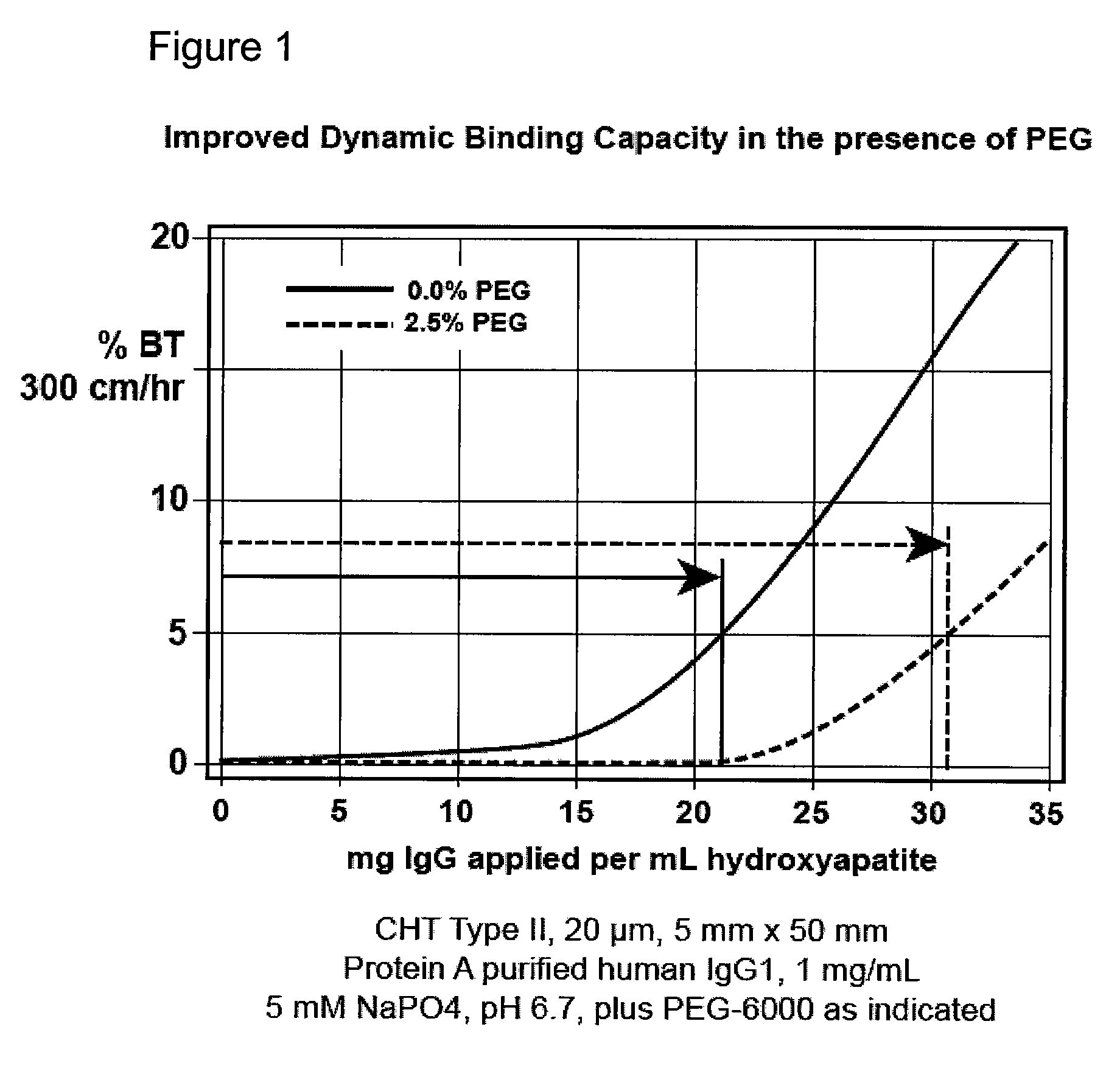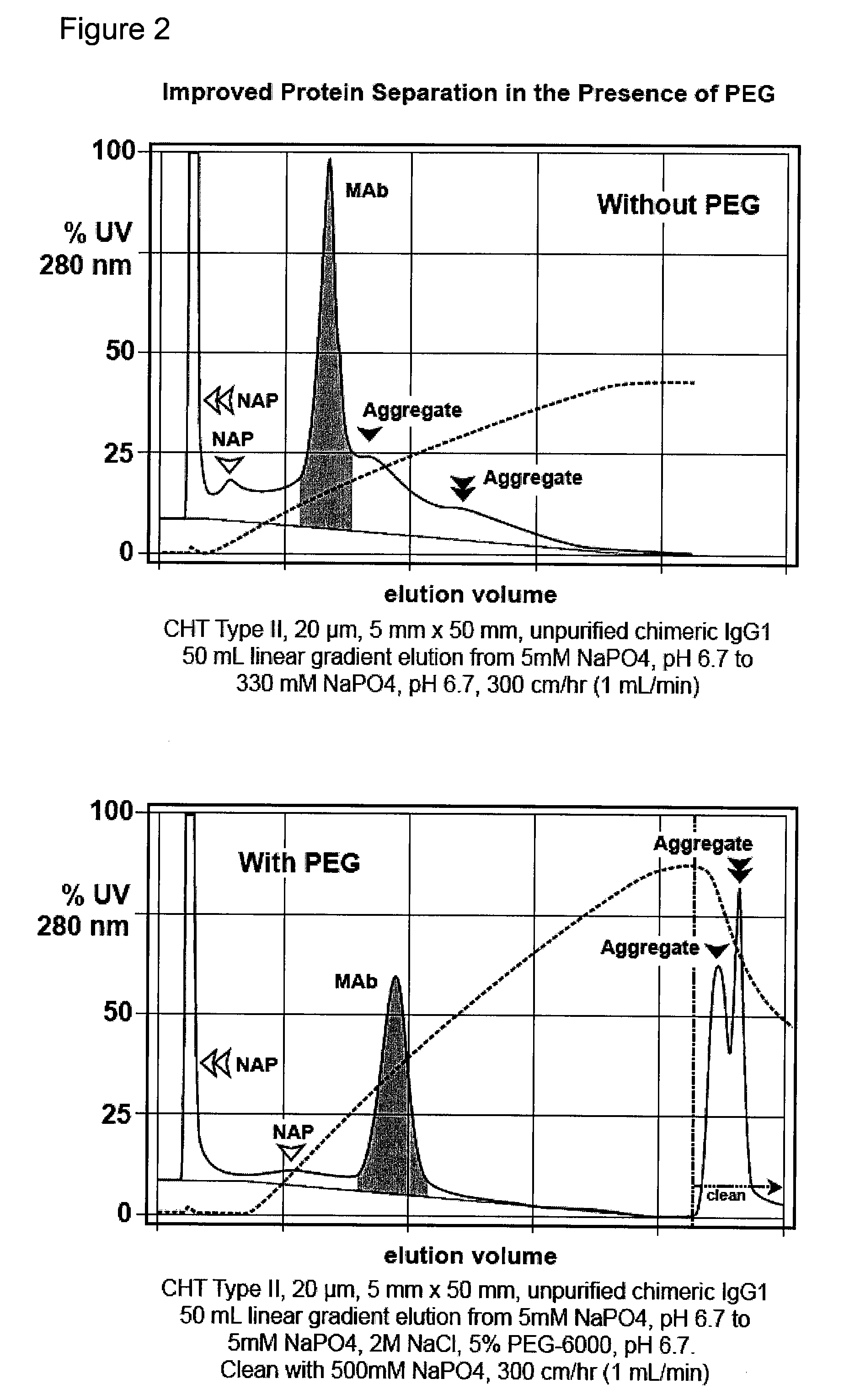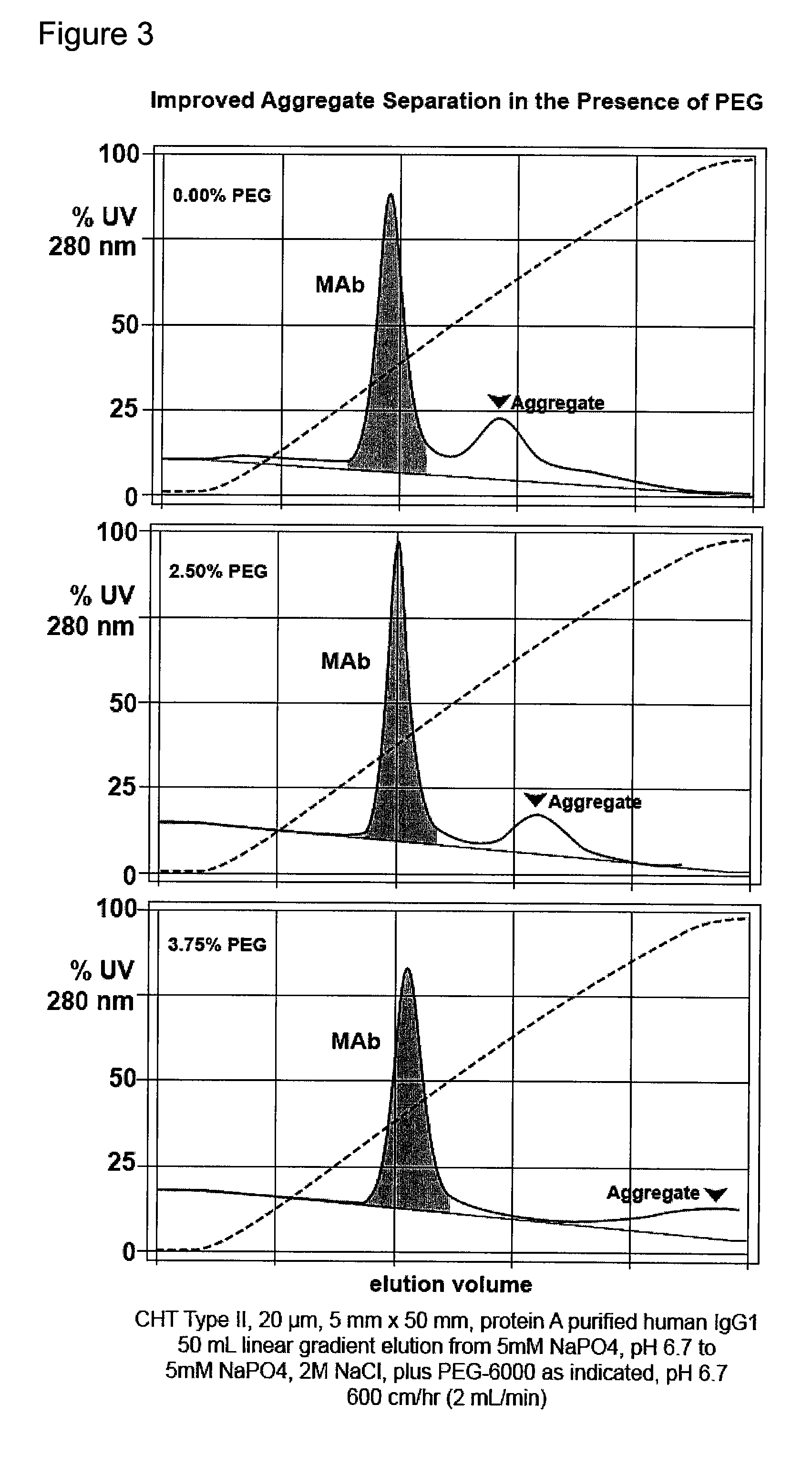Enhanced capacity and purification of antibodies by mixed mode chromatography in the presence of aqueous-soluble nonionic organic polymers
a nonionic organic polymer and mixed-mode chromatography technology, which is applied in the separation of components, biological testing, peptides, etc., can solve the problems of complex method development, long time-consuming and laborious, and the development of useful procedures may require long periods of time, so as to enhance the binding capacity of antibodies, enhance the retention of antibodies, and improve the effect of productivity
- Summary
- Abstract
- Description
- Claims
- Application Information
AI Technical Summary
Benefits of technology
Problems solved by technology
Method used
Image
Examples
example 1
[0095](FIG. 1). Bind-elute mode, enhancement of binding capacity. A column of hydroxyapatite, CHT Type II, 20 micron, 5 mm diameter, 50 mm height, is equilibrated at a linear flow rate of 300 cm / hr with 5 mM sodium phosphate at pH 6.7. A monoclonal antibody preparation previously purified by protein A affinity chromatography is equilibrated to the same conditions and applied to the column. The effluent is monitored for UV absorbance at 280 nm to characterize the binding capacity of the column. The column is then cleaned with about 600 mM potassium phosphate, pH 6.7. The run is repeated but with about 2.5% PEG-6000 added to the sample and column equilibration buffer. Different molecular weights or concentrations of PEG, and variations in other parameters, may be evaluated in subsequent iterations to determine the formulation that provides the best results for the particular antibody. Other nonionic organic polymers may be evaluated as well.
example 2
[0096](FIG. 2). Bind-elute mode, enhanced removal of non-antibody protein contaminants and aggregates from a preparation of unpurified monoclonal antibody. A column of hydroxyapatite, CHT Type II, 20 micron, 5 mm diameter, 5 cm height, is equilibrated at a linear flow rate of 300 cm / hr with 5 mM sodium phosphate at pH 6.7. An unpurified antibody preparation is applied to the column, washed with equilibration buffer, then eluted with a gradient to 5 mM sodium phosphate, 2.0 M sodium chloride, pH 6.7. The run is repeated but eluted with linear gradient to about 5 mM sodium phosphate, 2.0 M sodium chloride, and about 5% PEG-6000. In a subsequent iteration, the run is repeated except that the concentration of PEG-6000 in the gradient endpoint buffer is increased to 3.75%. Different molecular weights or concentrations of PEG, and variations in other parameters, may be evaluated in subsequent iterations to determine the formulation that provides the best results for the particular antibod...
example 3
[0097](FIG. 3). Bind elute mode, enhanced removal antibody aggregates from a preparation or protein A purified monoclonal antibody. A column of hydroxyapatite, CHT Type I, 20 micron, 5 mm diameter, 5 cm height, is equilibrated at a linear flow rate of 300 cm / hr with 5 mM sodium phosphate at pH 6.7. The partially purified antibody preparation is applied to the column, washed with equilibration buffer, then eluted with a linear gradient to 5 mM sodium phosphate, 2.0 M sodium chloride, pH 6.7. The run is repeated but eluted with a gradient to about 5 mM sodium phosphate, 2.0 M sodium chloride, and about 7.5% PEG-6000. Different molecular weights or concentrations of PEG, and variations in other parameters, may be evaluated in subsequent iterations to determine the formulation that provides the best results for the particular antibody. Other nonionic organic polymers may be evaluated as well.
PUM
| Property | Measurement | Unit |
|---|---|---|
| molecular weight | aaaaa | aaaaa |
| molecular weight | aaaaa | aaaaa |
| average molecular weight | aaaaa | aaaaa |
Abstract
Description
Claims
Application Information
 Login to View More
Login to View More - R&D
- Intellectual Property
- Life Sciences
- Materials
- Tech Scout
- Unparalleled Data Quality
- Higher Quality Content
- 60% Fewer Hallucinations
Browse by: Latest US Patents, China's latest patents, Technical Efficacy Thesaurus, Application Domain, Technology Topic, Popular Technical Reports.
© 2025 PatSnap. All rights reserved.Legal|Privacy policy|Modern Slavery Act Transparency Statement|Sitemap|About US| Contact US: help@patsnap.com



